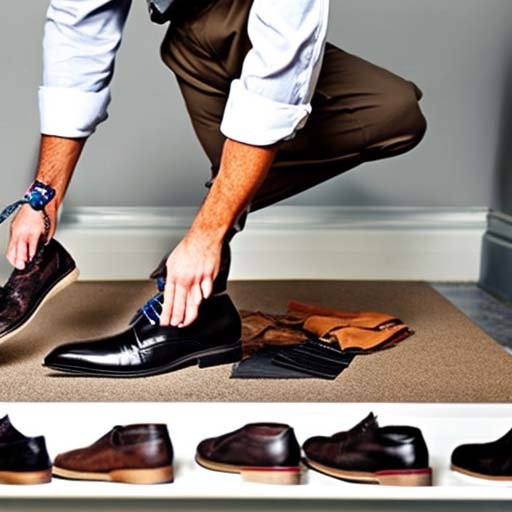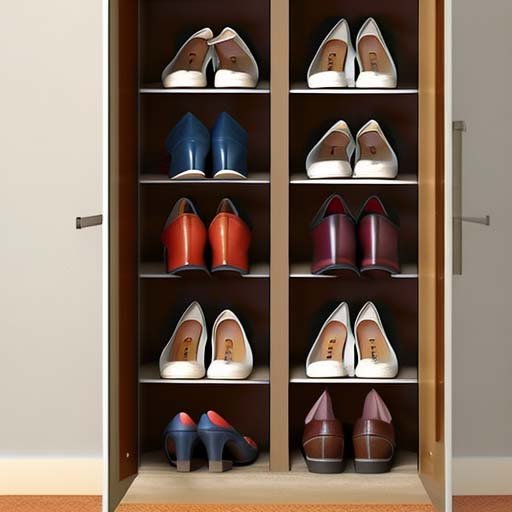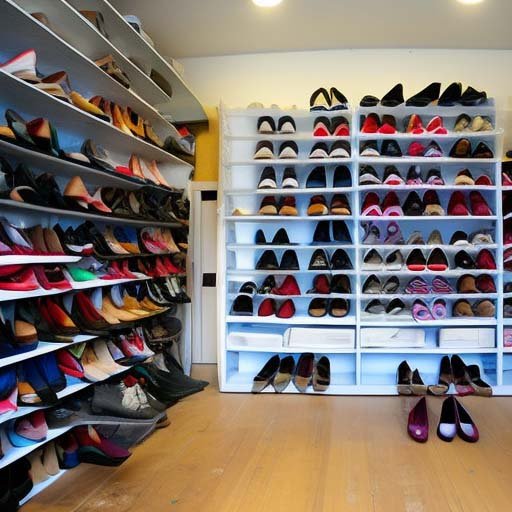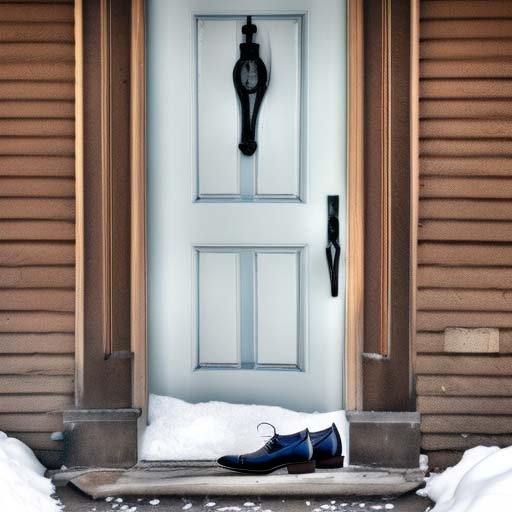In a world where fashion and functionality often collide, shoes hold a unique place. They not only protect our feet and provide comfort during our daily activities but also serve as an essential part of our style statement.
However, maintaining the quality and aesthetic appeal of our shoes can become a daunting task, particularly when we live in adverse climatic conditions.
If you reside in an environment that is consistently humid, wet, or cold, you might face several challenges in preserving your shoe collection.
This article will provide you with the ultimate roadmap to effective shoe storage, helping you protect your shoes from damage in wet, heat, and cold environments.
Understanding the Challenge: Shoe Storage in Wet Climate Environments
Before delving into the specific strategies for shoe storage, it’s crucial to understand the problems that many individuals face when residing in an environment that is constantly humid, wet, or cold.
Shoes, particularly those made of organic materials like leather or suede, are highly vulnerable to moisture. Prolonged exposure to a damp environment can cause your shoes to develop mold or mildew, or even warp the material.
Additionally, if your shoes are stored improperly, they can absorb excess moisture, leading to unpleasant odors and potential deterioration of the shoe structure.
Top 10 Strategies for Shoe Storage in Adverse Climates
Having a clear understanding of the challenges, let’s explore the top 10 ways to protect and care for your shoes in adverse climates:
1. Regular Cleaning
Regular cleaning is the first step towards protecting your shoes. Make sure to remove any dirt or dust from your shoes after each use.
You can use a soft brush or a damp cloth for this purpose. Remember, the cleaner your shoes are before storage, the less likely they are to develop issues later on.
2. Conditioning

For leather shoes, conditioning is an essential step.
Leather conditioner helps restore the natural oils in your shoes, preventing them from drying out and cracking.
Look for a conditioner that is specifically designed for leather, and use it as per the instructions given on the product label.
Additionally, you can also apply a waterproofing spray to your shoes to protect them from moisture. This will help keep your shoes in good condition even in wet climates.
3. Proper Storage

Store your shoes away from direct sunlight or any other sources of heat. Keep them in a cool and dry place such as a closet or cupboard, making sure that there is adequate space between them so that air can circulate freely.
If you don’t have access to an enclosed space, you can also use shoe bags or boxes to store your shoes and keep them away from moisture.
6. Proper Drying
Before you store your shoes, make sure they are completely dry. If you’ve cleaned your shoes with water or if they’ve gotten wet from rain or snow, let them air dry naturally.
Avoid placing them near a heat source, as this can cause the material to dry out and crack.
4. Use of Desiccants
Consider using desiccants, like silica gel packets, inside your shoes during storage. These absorb excess moisture and can help prevent the growth of mold and mildew.
5. Avoiding Direct Sunlight
Direct sunlight can cause your shoes to fade and can also dry out certain materials. Always store your shoes in a cool, dark place.
6. Maintaining Shape
To help your shoes keep their shape during storage, consider using shoe forms, shoe trees or stuffing them with acid-free tissue paper. This can prevent creases and wrinkles in the material.
Shoe trees can be an essential tool for preserving the shape of your shoes, as well as preventing wrinkles and creases on leather surfaces. Invest in a pair of cedar shoe trees that absorb moisture from the inside of your shoes and help maintain their shape over time.
7. Proper Storage Solutions

Invest in good-quality storage solutions for your shoes. Plastic containers with ventilation holes are a great option, as they protect your shoes from dust and moisture while allowing for air circulation.
8. Rotating Your Shoes
Try not to wear the same pair of shoes every day. Rotating your shoes can allow them time to air out and recover their shape between wears.
9. Regular Inspection
Even while in storage, your shoes can benefit from regular inspections. Check for signs of mold, mildew, or other damage. Catching these issues early can make them easier to deal with.
10. Seeking Professional Help
If your shoes do become damaged due to adverse climate conditions, it might be worth seeking professional help.
A shoe repair specialist can often restore damaged shoes back to their former glory.
Preparing Your Shoes for Storage
Before you store your shoes, there are a few key steps you should take to prepare them.
First and foremost, make sure your shoes are clean. Dirt and dust can scratch and damage your shoes over time, so it’s essential to remove any debris.
Use a soft brush or a cloth to gently clean your shoes, and let them dry completely before storing them.
Next, condition your shoes. This is especially important for leather shoes, as conditioning can help to keep the leather supple and prevent it from drying out and cracking.
Apply the conditioner according to the instructions on the product, and let it soak in before you store your shoes.
Finally, stuff your shoes with acid-free tissue paper or use shoe trees. This will help them to keep their shape while in storage, and prevent them from getting squashed or distorted.
Protecting Your Shoes While in Storage
Once your shoes are clean, conditioned, and stuffed, it’s time to store them.
But how can you best protect your shoes while they’re in storage?
One key tip is to avoid stacking your shoes on top of each other, as this can cause them to become squashed and misshapen. Instead, store each pair of shoes side by side, and try to give them a little space to breathe.
If you’re storing your shoes in a box or container, make sure it’s clean and dry. You can also add a few silica gel packets to the box to absorb any moisture and prevent mold and mildew from forming.
Finally, store your shoes in a cool, dry place away from direct sunlight. Extreme temperatures and sunlight can cause damage to your shoes, so it’s best to store them in a climate-controlled environment if possible.
Restoring Your Shoes After Damage
Despite your best efforts, you may find that your shoes have been damaged by the wet, cold, or heat of your environment.
But don’t despair – many types of shoe damage can be repaired.
For example, if your shoes have become moldy, you can clean them with a mild detergent and then let them dry completely before applying a fungicidal spray.
If your shoes have become discolored or faded, a shoe repair specialist may be able to restore their original color.
In some cases, you may need to replace parts of your shoes, such as the insoles or the laces. Again, a shoe repair specialist can help with this.
Conclusion
Storing your shoes properly in different climates can be a challenge, but with the right knowledge and techniques, you can keep your shoes in great condition.
From regular cleaning and conditioning to using the right storage solutions, these tips can help you protect your shoes from the damaging effects of wet, heat, and cold environments.
Remember, the key to effective shoe storage is preparation and regular maintenance.
By taking the time to care for your shoes and store them properly, you can extend their lifespan and enjoy wearing them for many years to come.
And if you do encounter any problems, don’t hesitate to seek help from a shoe repair specialist – they can often work wonders in restoring damaged shoes.
Remember, shoes are not just fashion accessories – they’re investments. So take care of them, and they’ll take care of you.

